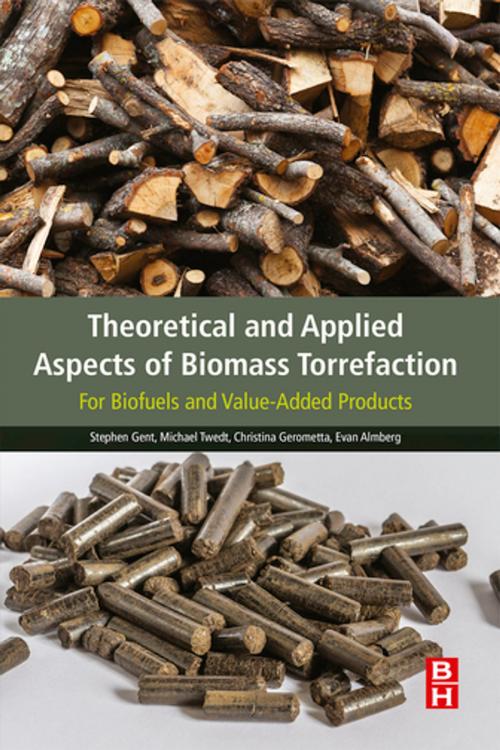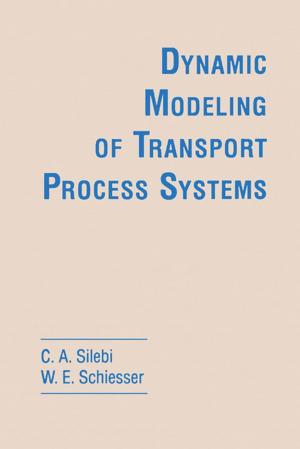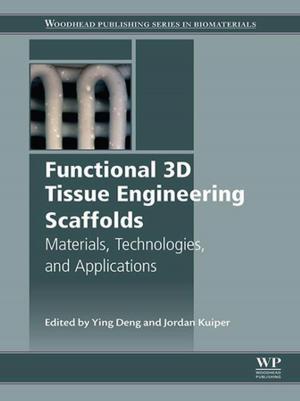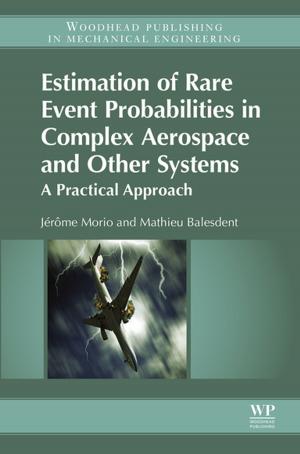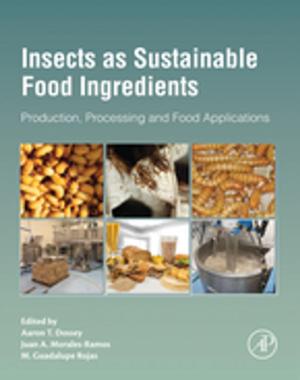Theoretical and Applied Aspects of Biomass Torrefaction
For Biofuels and Value-Added Products
Nonfiction, Science & Nature, Technology, Power Resources| Author: | Stephen Gent, Michael Twedt, Christina Gerometta, Evan Almberg | ISBN: | 9780128095171 |
| Publisher: | Elsevier Science | Publication: | June 16, 2017 |
| Imprint: | Butterworth-Heinemann | Language: | English |
| Author: | Stephen Gent, Michael Twedt, Christina Gerometta, Evan Almberg |
| ISBN: | 9780128095171 |
| Publisher: | Elsevier Science |
| Publication: | June 16, 2017 |
| Imprint: | Butterworth-Heinemann |
| Language: | English |
Theoretical and Applied Aspects of Biomass Torrefaction: For Biofuels and Value-Added Products presents a firm foundation of torrefaction technologies and their economic and sustainability aspects. It offers a theoretical background in the underlying principles of torrefaction reactions, including thermodynamics, chemical reactions, process modeling, end-products, and value-added products such as biochar and torr-gas. It also provides an overview of best practices in torrefaction systems, reactor design and scale-up, and compares torrefaction with other thermochemical processing technologies.
The authors discuss feedstock availability for a variety of biomass types, such as agricultural residues, woody residues, energy crops and municipal solid waste. They also examine logistics and markets for torrefied products, which includes their use in co-firing and combined heat and power generation, as well as emissions and other environmental aspects. This balanced and thorough approach to the subject matter makes this an excellent resource for engineers, researchers, and graduate students in the field of biomass conversion, especially with background in energy engineering, mechanical engineering, chemical engineering, environmental engineering, biological engineering, and agriculture.
- Offers a comprehensive overview of torrefaction, balancing theoretical and applied perspectives of torrefaction technologies from a holistic perspective
- Examines economic and sustainability aspects, including logistics, markets, feedstock, and emissions
- Presents a variety of relevant, real-world examples that underscore the production and utilization of torrefied material
- Offers a balanced and thorough approach to the subject, making it an excellent resource for engineers, researchers, and graduate students in the field of biomass conversion
Theoretical and Applied Aspects of Biomass Torrefaction: For Biofuels and Value-Added Products presents a firm foundation of torrefaction technologies and their economic and sustainability aspects. It offers a theoretical background in the underlying principles of torrefaction reactions, including thermodynamics, chemical reactions, process modeling, end-products, and value-added products such as biochar and torr-gas. It also provides an overview of best practices in torrefaction systems, reactor design and scale-up, and compares torrefaction with other thermochemical processing technologies.
The authors discuss feedstock availability for a variety of biomass types, such as agricultural residues, woody residues, energy crops and municipal solid waste. They also examine logistics and markets for torrefied products, which includes their use in co-firing and combined heat and power generation, as well as emissions and other environmental aspects. This balanced and thorough approach to the subject matter makes this an excellent resource for engineers, researchers, and graduate students in the field of biomass conversion, especially with background in energy engineering, mechanical engineering, chemical engineering, environmental engineering, biological engineering, and agriculture.
- Offers a comprehensive overview of torrefaction, balancing theoretical and applied perspectives of torrefaction technologies from a holistic perspective
- Examines economic and sustainability aspects, including logistics, markets, feedstock, and emissions
- Presents a variety of relevant, real-world examples that underscore the production and utilization of torrefied material
- Offers a balanced and thorough approach to the subject, making it an excellent resource for engineers, researchers, and graduate students in the field of biomass conversion
